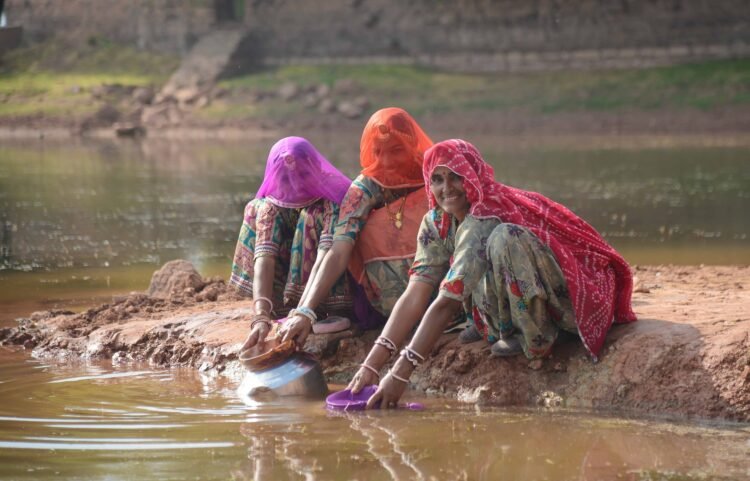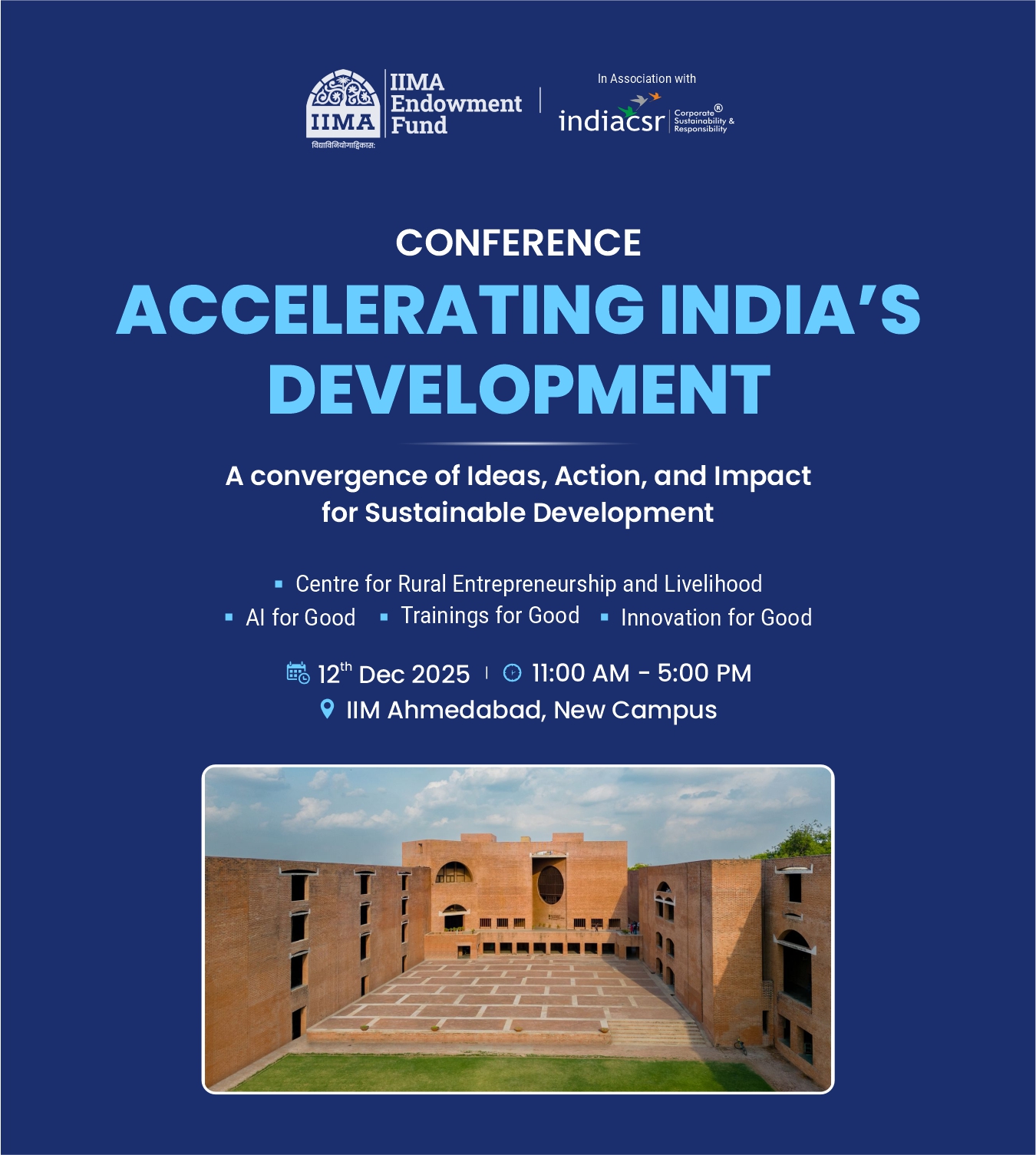From water harvesting and drinking water, to water use efficiency and water quality testing – there is a vital role that people can play to take the power of water back into their own hands
By Pearl Tiwari
India finds itself on the brink of disaster, as water sources dry up, groundwater depletes and millions struggle to find the safe, and precious water they need to simply survive. Fundamentally, this has been a man-made crisis, where the behaviour of India’s mass population has been a key contributor to the problem. We can therefore surmise that people, and the communities in which they live, are also at the root of the solution – giving us a certain hope that maybe, it’s not too late to turn things around.
By involving people in all aspects of water, we empower them to make the necessary changes in both attitude and behaviour, to transform communities from water barren landscapes to hubs that thrive – all thanks to abundant, safe water. From water harvesting and drinking water, to water use efficiency and water quality testing – there is a vital role that people can play to take the power of water back into their own hands.
Where it all went wrong?
Historically in India, water was a communal resource managed by the community for the wellbeing of all. Local people took responsibility of managing and maintaining traditional systems of water harvesting, ensuring its equitable distribution and that fundamentally, it was not ‘wasted’. However, during the colonisation of India, the British replaced this decentralised system of managing water, with a centralised one. The Public Works Department subsequently took control of the precious resource and, as a result, people gave up the responsibility of managing and caring for water – instead seeing it as a resource that was ‘doled out by the powers that be’.
This perhaps, was the key turning point in history, that led us to the water crisis we find ourselves in today. Even after independence this approach to water management continued – weakening community involvement and positioning them as mere ‘beneficiaries’ of water. We see myriad effects of this as a result – poorly maintained and defunct water harvesting structures, lack of knowledge on the functioning of such systems by the current generation and perhaps worst of all, irresponsible and inefficient use of water.
But after 1980, the approach started to change. The focus shifted towards enhanced community involvement in water projects, with many successful stories emerging – like the work of Tarun Bharat Sangh in Alwar, Rajasthan. Today, community participation in water conservation is at the heart of a community’s ability to turn their water crisis around, and it must be prioritised as a way forward by NGOs, Governments and CSR bodies who are trying to tackle the complex issue of water.
The Role of People in Water
To analyse the crucial role that people play in transforming the state of water in their communities, it is best to look at case stories from the work of Ambuja Cement Foundation (ACF), who has been investing in people and water for the past 25 years. Time and again, they have proved that, by simply engaging people in the process, water has returned to communities in abundance – and stayed there.
Reviving Traditional Structures
Since antiquity, water has been harvested in diverse and distinctive traditional water structures. However, over a period, many of these valuable structures fell into disuse. From the early 2000s, ACF has prioritized the repair and maintenance of already existing water structures over building new ones in water-starved regions.
In Bhatapara, Chhattisgarh, ACF along with the community, took initiative in repairing a Tar (check dam), with a capacity of holding up to 50,000 m3 of water. While the structure was still in use, siltation, leakages, and disrepair meant that water availability was limited to a few months in a year and that too, to only a few farmers. Excavation was organised and outlets were drained to properly channel the water. The work resulted in increasing the water storage capacity by almost 35,000 m3. Consequently, about 550 acres of farmland and 350 farmers in the region are today benefitting from year-round water availability.
The cornerstone of ACF’s approach lies in enabling people. To make a defunct water structure operational again, several educational and awareness discussions are held with the community to help them realise the potential of the water structure. In the repair itself, the community contributes to making the structure functional again by contributing to labour and costs. This is consciously done to establish community ownership over the structure and its maintenance. In some villages, Water User Associations or Village Development Committees are formed to oversee the repair and subsequent monitoring and functioning of the structures while in other regions, the gram panchayat itself may perform these duties.
Micro Irrigation
The agricultural sector is one of the key contributors to the water crisis in India, with 70% of all groundwater being pumped for inefficient flood irrigation purposes, which delivers only 35% water use efficiency.
The scenario was the same in Kodinar, Gujarat, a water stressed region where the majority of farmers flood irrigated crops. As a result of over pumping, the water table had depleted and salinity from the coastline had crept inland-crippling water supplies for both drinking and agricultural purposes.
To tackle the problem ACF started mobilizing the farming community into learner groups – educating them on the judicious use of water in crop irrigation. A change of behavior was the need and so ACF focused efforts on educating farmers – providing water management training and conducting exposure visits to model farmers, so farmers could see alternative irrigation techniques, such as drip and micro irrigation, first hand.
Farmers were surprised to learn that micro irrigation could help save up to 60% of water and that by installing it, they could increase their crop productivity by up to 40%. it did not take long for them to jump on board and be willing to make the change. Acting as a facilitator, ACF helped farmers tap into the Government aided Micro Irrigation Scheme, enabling them to avail Government assistance as per eligibility and prevailing scheme norms, along with further incentive from ACF so that farmers could install micro irrigation by pooling resources.
The results were incredible, with 2444 farmers investing an average of Rs. 55,250 for the installation and adoption of micro and drip irrigation covering approx. 1154 ha land in 2021 – to improve water use efficiency and water productivity.
Water Quality Testing
In 2018, the Community Health Clinic in Math Village, Kodinar block, Gujarat noticed a severe spike in fever among the community during monsoon, and it seemed everyone was ‘sick’ as a result. Something was clearly wrong.
ACF decided to get the water tested and see if that was the source of the problem. The test results highlighted high levels of bacteria in the water. Investigating further, they also realized that the local water storage tanks were contaminated and needed cleaning out to protect the water, which was piped into the community via a Government pipeline.
Taking a 3 phase approach ACF set about educating the community about the importance of regular water quality testing; teaching them how to conduct a simple water test; and showing them the steps necessary to address the problem – using chlorine powder to treat water, cleaning storage tanks and electing a local Water Operator to manage the water and its distribution.
But apparently Math was not the only village in the region that was affected by the problem. With high salinity in the groundwater, many other communities were suffering from adverse health problems as a result of poor water quality. ACF set about educating and training villagers in the area on water quality testing, with community appointed Water Operator ‘paying it forward’ – educating other Water Operators on how to test water and ensure it was safe for dispersal in the community.
Community Water Audit
There is a growing need for communities to develop and manage their local water resources in a sustainable manner. However, an essential first step is to gain an understanding of the total local supply of water, vis a vis the local demand for it. To effectively measure this, ACF is training communities to conduct their own ‘Community Water Audit’ – educating them to not only harvest water, but save it.
To first test the model, ACF conducted a Participatory Water Audit in Rawan Village, of block Bhatapara, Balodabazar in Chhattisgarh and worked collaboratively with the community to understand its total water needs. Information was captured through a participatory process and secondary reports and the extent of the problem was analyzed. Finally, potential solutions were suggested to the community to take forward, with support by ACF.
In Conclusion
Community participation plays a very important role in restoring water abundance to India – by promoting collective action, we can ensure the proper maintenance of water structures, equitable distribution among all users, the sharing of ideas and traditional knowledge, and contribution by community to projects, promoting ownership.
Myriad examples exist where local people in local communities, with education and guidance, have transformed their water story – from one of desperation, to one of abundance. The solutions are right in front of us, and whilst they were certainly not ‘easy’, we have a duty to adopt them and put people back in the centre of water.

About the Author
Pearl Tiwari, Director and CEO, Ambuja Cement Foundation





